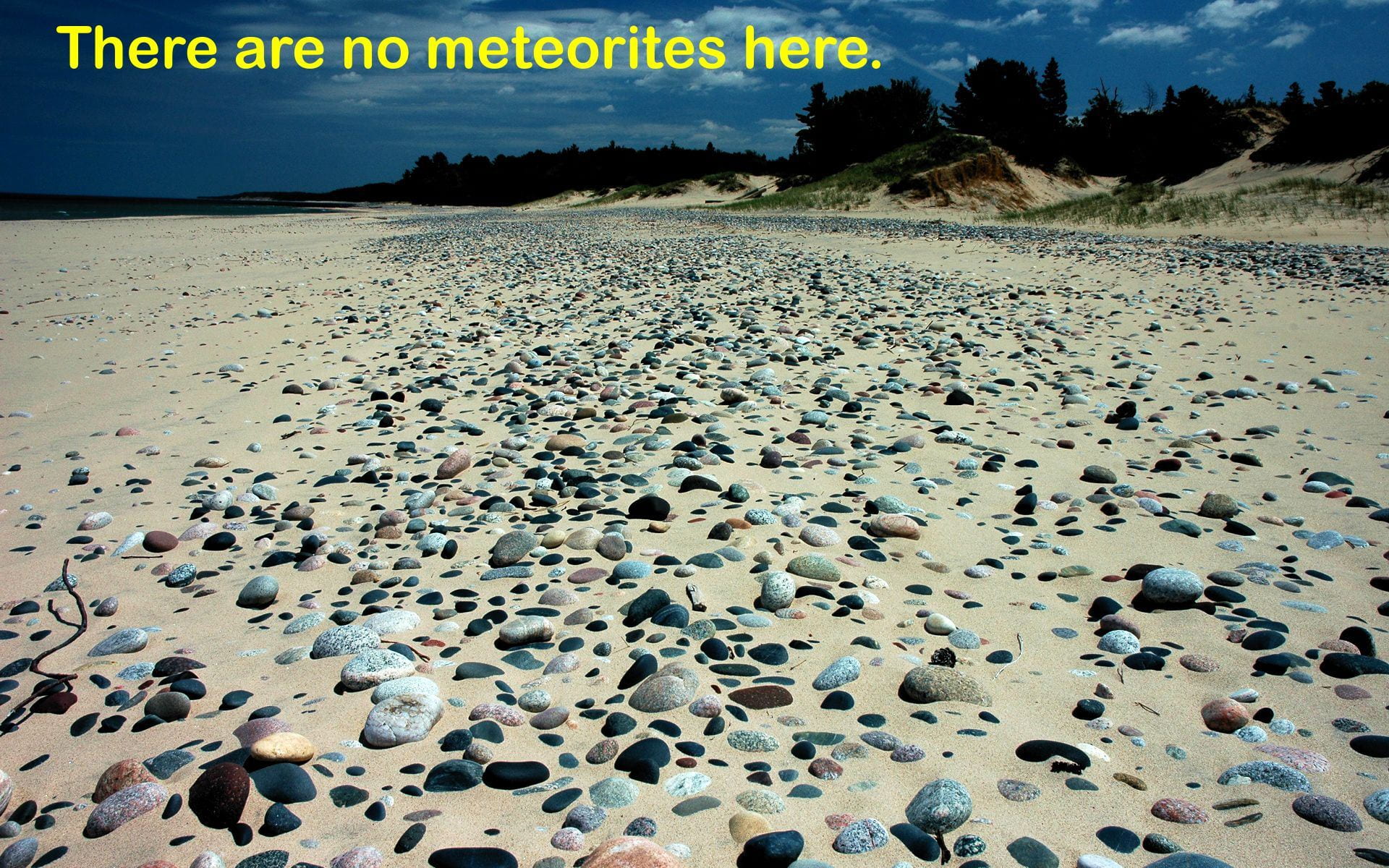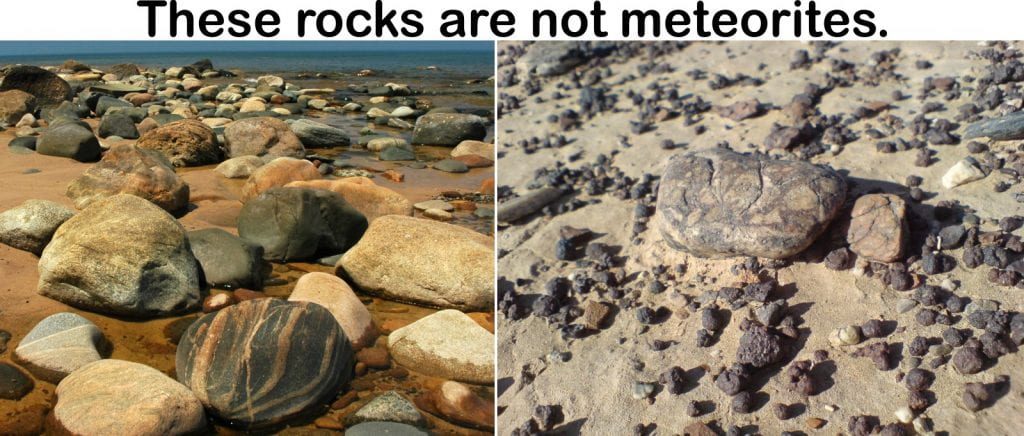Not on the beach
Meteorites are not found on beaches
If it is a rock and you found it on a beach or in the water of an ocean or lake, then it is not a meteorite. Or, if it is, nobody can identify it as a meteorite just by looking at it (but, read about Monticello, below). If a stony meteorite landed in the water and later washed up on a beach it would have lost its fusion crust and regmaglypts as a result of abrasion against other rocks and sand by wave action. If it were an ordinary chondrite, it would likely have broken apart from rusting of the metal, particularly if it landed in salt water. If it survived as a rock, it would be all but impossible to identify as a meteorite just “by looking.” It would not look at all special, except maybe for some rusty spots. But who knows? Stony meteorites do land in the water but nobody has ever found and recognized one on the beach! It would require chemical or petrographic tests to prove that such a rock was a meteorite.
Experienced meteorite finders would never look for meteorites on a beach.
“Fossil meteorites” have been found in sedimentary rocks that formed at the bottom of a sea or ocean.


But…

I am aware of only two meteorites, Southampton (pallasite, find, 2001, 3.58 kg) and Penouille (iron, IAB complex, find, 1984, 72.5 g), that were found on a beach. Neither is a stony meteorite. More info on Southampton and Penouille.
July 2024: After writing everything above, I discovered that there is at least one stony meteorite that was found on a lakeshore, Monticello, a 210-gram howardite.
“The meteorite was lying on the shoreline of Lake Cumberland near the town of Monticello, Wayne County, Kentucky (USA)… It is medium gray, relatively unweathered and lacks any fusion crust. The absence of crust is puzzling. Among reasonable explanations it is possible the meteorite fell into shallow water and rapid quench caused the crust to crack excessively, eventually spalling off under wave action” (Olsen E. J., Dod B. D., Schmitt R. A., and Sipiera P. R., 1987. Meteoritics 22, 81-96).
The hypothesized explanation requires that the meteorite was hot when it entered the water and many experts believe that most meteorites land cold. The article above does not explain what prompted the finders (Bruce Dod and Dallas Jones) to suspect that the 7.4-ounce rock might be a meteorite. Local rocks of Wayne County are sedimentary (shale, limestone, sandstone) whereas the meteorite is a regolith breccia consisting of pyroxene, plagioclase, and glass.
October, 2004: OK, I found another one. Tiger Tail, a 39-g ordinary chondrite found “along a shell beach close to the edges of the Homosassa River” in Florida. “…the stone was dry with some shell/sand residue still attached.”